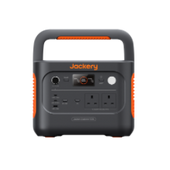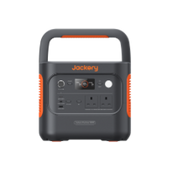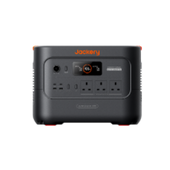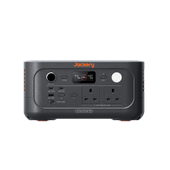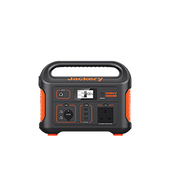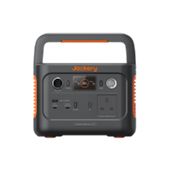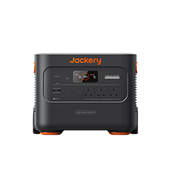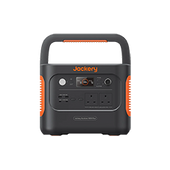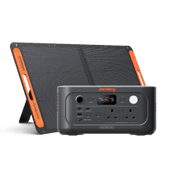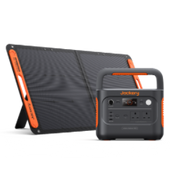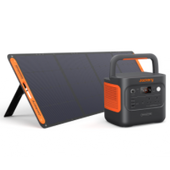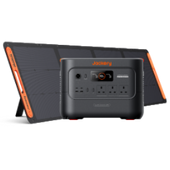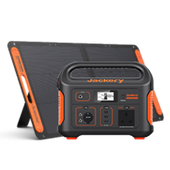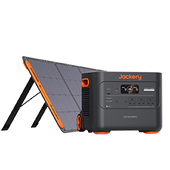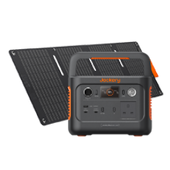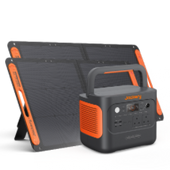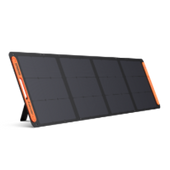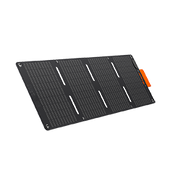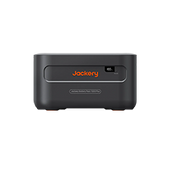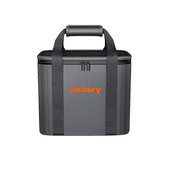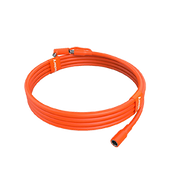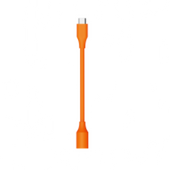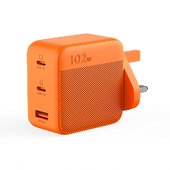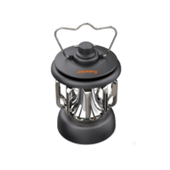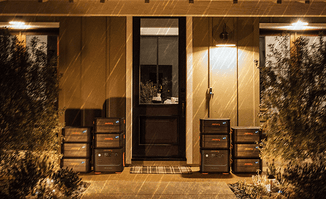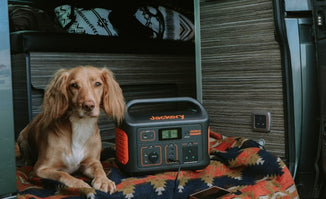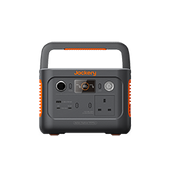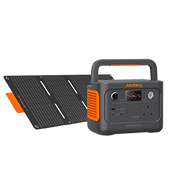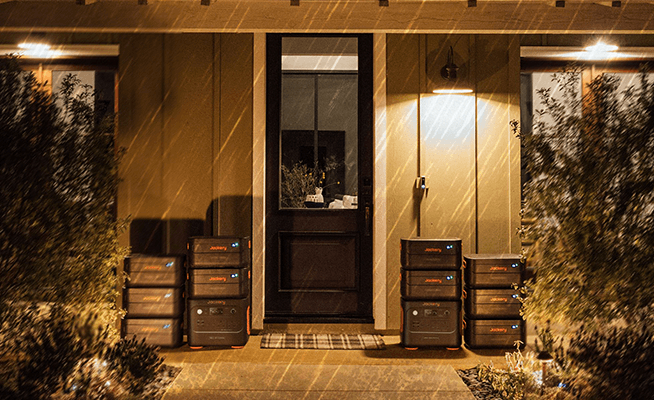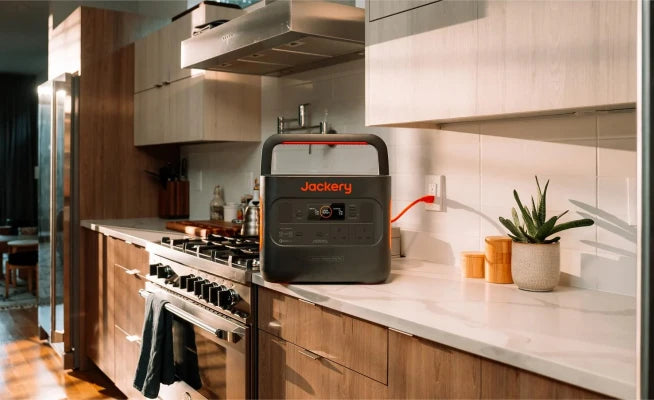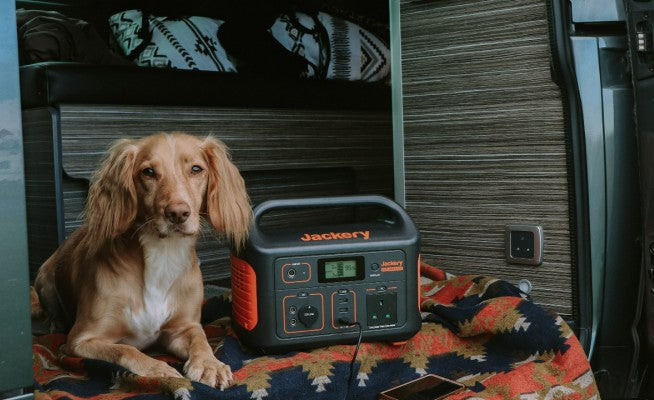Peak Sun Hours: How Many Peak Sun Hours Needed to Go Solar
If you are thinking of going solar and investing in solar systems, you probably would want to know if your home receives enough sunlight. You must remember that only total sunlight hours are not enough, but peak sun hours are what really matters. This number will determine if solar panels are a worthy investment.

A highly efficient solar panel, like Jackery SolarSaga Solar Panels, can produce more solar energy in peak sunlight hours. They are made from monocrystalline silicon solar cells that convert the sun's rays into electricity. This comprehensive guide reveals what exactly is peak sun hours and how they differ depending on the state.
|
Products |
Image |
Power Output |
Conversion Efficiency |
Cell Chemistry |
Dimensions |
 |
200W |
24.3% |
Monocrystalline Silicon Solar Cells |
Folded: 21.2 x 24.2 x 1.6 in (540 x 615 x 40 mm) Unfolded: 21.2 x 91.3 x 1 in (540 x 2320 x 25 mm) |
|
 |
100W |
24.3%
|
Monocrystalline Silicon Solar Cells |
Folded: 24 x 21 x 1.4 in (610 x 535 x 35 mm) Unfolded: 48 x 21 x 0.2 in (1220 x 535 x 5 mm) |
|
 |
80W |
25% |
Monocrystalline Silicon Solar Cells |
Folded: 35.67 x 20.79 x 1.06 in (906 x 528 x 27 mm) Unfolded: 35.67 x 20.79 x 1.06 in (906 x 528 x 27 mm) |
What Are Peak Sun Hours?
The term "peak sun hours" is defined as the time in which the intensity of solar irradiance (or sunlight) reaches an average of 1000 watts of energy per sq. meter (or 10.5 feet). In simple words, a peak sun hour is the equivalent of 1000W per square meter of the sun's rays for one hour.

Here is the mathematical representation of the peak sun hours:
1 peak sun hour = 1 hour of sunlight at 1000 watts per sq. meter = 1000 watts per sq. meter.
Or, 1 peak sun hour = 1 kilowatts per sq. meter
Although the solar panels may receive an average of 7 hours of sunlight, the average peak sun hours are generally around 3 or 5. The non-peak sun hours are the remaining hours when the panels receive sunlight but not with high intensity.
Why Are Peak Sun Hours So Important?
The peak sun hours are an essential factor that determines whether solar panels will produce enough electricity to charge appliances and get ROI. The home's location will determine how many hours of sunlight it gets and how intense the sun's rays are.
Knowing your average peak sun hours can help you calculate the number of solar panels required.
- Peak sun hours = 4
- Your home used 10,000kWh of electricity last year
- 10,000kWh / 365 days = 27.3kWh per day
- 3kWh per day / 4 peak sun hours per day = 6.8kWh
This means you'll have to install a solar system that supplies around 7kW.
Jackery SolarSaga Solar Panels have high efficiency that meets industry standards and can charge the battery backup in a few hours. Let's look at how peak sun hours are used to measure sunlight for a particular location.
The sun does not shine with the same intensity throughout the day. Instead, it keeps fluctuating depending on the time of the day and weather. For example, sunlight will likely be less than 500W/m2 during early mornings and late afternoons.
During middays, you are more likely to receive more or less 1000W/m2. If a location receives 6,650Wh/m2 of solar radiation over a day, then the site gets 6.65 peak sun hours.
How Many Peak Sun Hours Needed to Go Solar?
Here are some simple ways to estimate how many peak sunlight hours you receive.
Check Average Peak Hours in Your State
The simple way to estimate the peak sun hours is by checking your state's average peak sun hours. Generally, the states that share borders with Canada fall on the lower end of the spectrum. The southwest states receive the highest peak sun hours.
Check the Average Peak Sun Hours of Nearby City
Those living in North America's major metropolitan areas receive between 3.5 and 7 hours of peak sunlight over the course of the year.
Calculate Using PVWatts Calculator
The energy received from the sunlight is called radiation and is composed of particles known as photons. Each photon carries some energy.
When solar radiation reaches the Earth's surface, it is divided into direct and diffuse categories. Direct radiation reaches the ground in a straight beam, whereas diffuse radiation is reflected by the atmosphere or scattered by clouds, dust, and smog. Together, direct and diffuse radiation is called global radiation.
There is no single answer to how many peak sun hours are necessary to go solar. As peak sun hours vary from one location to another, the exact capacity of the solar system can produce different results in different areas. For example, a six-kilowatt (kW) solar array will generate more energy in Phoenix than in Washington, DC.
Jackery Solar Panels Explained
Solar power is witnessing rapid adoption as it has so many benefits. With enough solar panels and a battery backup, you can eliminate high electricity bills and forego reliance on aging infrastructure.
Jackery has a reliable range of solar panels and power stations that lets you supply electricity and protect against power outages.
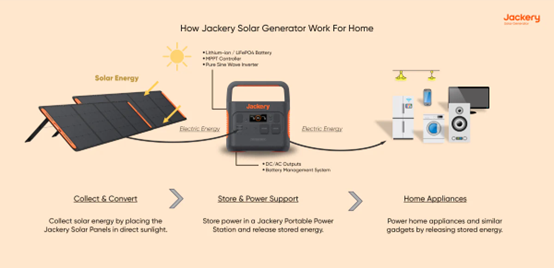
The SolarSaga Solar Panels by Jackery are built with monocrystalline silicon solar cells to collect and convert maximum sun's rays into electricity. Below, we will include the popular Jackery SolarSaga Solar Panels that are highly efficient, portable, and foldable.
Jackery SolarSaga 200W Solar Panels
Jackery SolarSaga 200W Solar Panels are made from monocrystalline silicon solar cells with a high solar conversion efficiency of up to 24.3%. It has an ETFE-laminated case that protects the panels and extends their lifespan. The IP67 waterproof rating can withstand harsh and wet weather, making these panels ideal for outdoor adventures.

Customer Review
"These are fantastically well-made panels! The thought and build quality that went into them are something to be proud of. I use two of them to charge my Explorer 1500. The carrying case is super nice as well, and the cord is stored in an inside pocket that is built in." — Grant.
|
Explorer |
No. of Panels |
Energy Produced |
Recharging Time |
Working Hours (Assuming you are charging 400W consuming appliances) |
|
Explorer 2000 Pro |
6 |
2346Wh |
2.3H |
5H |
|
Explorer 1000 Pro |
4 |
1224Wh |
1.8H |
2.6H |
|
Explorer 500 |
1 |
639Wh |
9H |
1.3H |
Jackery SolarSaga 100W Solar Panels
Jackery SolarSaga 100W Solar Panels have a high conversion efficiency of 24.3% and an IP65 waterproof rating. The compact and lightweight solar panels have two USB output ports to charge two small devices. In order to power other home appliances, you connect the solar power panels to the power station.

Customer Review
"Took it camping for a week, and using Jackery 240 and the 100w solar panel was plenty for keeping devices charged and the occasional re-inflation of air mattresses for 6+ people. I feel better prepared for the next power outage at home, too." — Garret Mueller.
|
Explorer |
No. of Panels |
Capacity |
Recharging Time |
Working Hours (Assuming you are charging 400W consuming appliances) |
|
Explorer 2000 Pro |
6 |
2805Wh |
5.5H |
6H |
|
Explorer 1000 Pro |
4 |
1292Wh |
3.8H |
2.7H |
|
Explorer 500 |
1 |
639Wh |
9H |
1.3H |
Jackery SolarSaga 80W Solar Panels
Jackery SolarSaga 80W Solar Panels have an ultra solar conversion efficiency of 25%. They have an IP68 waterproof rating and extensive compatibility with all Jackery products. These upgraded dual-sided solar panels are designed with extra-white glass to offer industry-leading efficiency. There are also protective rubber bumpers on each corner to prevent accidental damage.

Customer Review
"I am very impressed with the new 80-watt solar panel. The water resistance rating is very high, and it is not in danger if accidentally rained upon. And morning dew is not a panel killer either. The built-in corner protection is beefy." — Craig.
|
Explorer |
No. of Panels |
Capacity |
Recharging Time |
Working Hours (Assuming you are charging 400W consuming appliances) |
|
Explorer 1000 Pro |
12 |
1468.8Wh |
1.8H |
3.1H |
|
Explorer 500 |
1 |
629.8Wh |
9.4H |
1.3H |
Peak Sun Hours FAQs
1. What type of energy is received from the sun? And how much energy is received from the sun?
We receive sunlight in the form of radiation from the sun composed of particles called photons. Solar energy reaches the edge of Earth's atmosphere at a constant rate of about 1370 watts per square meter. The atmosphere absorbs part of it, and the maximum power received by the Earth's surface is about 1000 watts per square meter.
2. What ways to maximize the peak sun hours?
Here are a few simple tips that will let you maximize the value of peak sun hours received.
- Store Electricity:Solar panels collect and convert the sun's energy to electricity. During the peak hours, they will convert more solar energy. Investing in a battery backup system will help you store and use the generated electricity later.
- Reduce Appliance Usage During Peak Hours:You can maximize electricity generation by reducing appliance usage during peak sun hours. This lets you store more power, which can be used in later hours.
- Net Metering: You can benefit from net metering if your solar panels produce more electricity.
3. What are the differences between peak sun hours and solar irradiance?
Peak sun hours express how much solar energy (or solar irradiance or solar isolation) a location receives over time. On the other hand, solar irradiance is the term that defines the solar radiation actually reaching the surface or the power received per unit area from the sun. While peak sun hours are typically defined as 1kWh/m2 of solar energy, solar irradiance is expressed in kWh/m2 per day or year.
Final Thoughts
Understanding the peak sun hours for your area will assist you in estimating the right size solar system. If you are unsure which solar system size will suit your needs, consider a solar generator with an expandable LiFePO4 battery.
Jackery Solar Generator 1000 Plus features a 1264Wh battery capacity that can be expanded to 5kWh using Battery Pack 1000 Plus. You can charge 99% of your home appliances without worrying about the electrical outlets.



